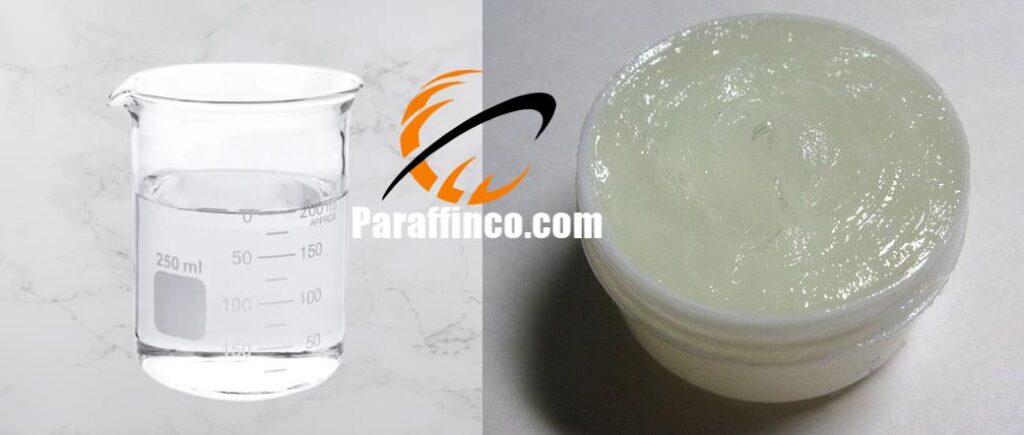Exploring the Distinctions: Normal Paraffin vs Petroleum Jelly
Normal Paraffin vs Petroleum Jelly, In the world of petroleum-derived products, Normal Paraffin and Petroleum Jelly emerge as two distinct substances with unique characteristics and diverse applications. While both originate from crude oil refining processes, they serve different purposes and offer distinct benefits across various industries and everyday uses. This comprehensive guide aims to dissect the differences between Normal Paraffin and Petroleum Jelly, exploring their features, manufacturing processes, and wide-ranging applications.
Understanding Normal Paraffin vs Petroleum Jelly
What is Normal Paraffin?
Normal Paraffin, also known as n-paraffin or straight-chain paraffin, is a hydrocarbon compound derived from crude oil. It consists of linear alkanes with a specific number of carbon atoms in their molecular structure. Normal Paraffin is typically colorless, odorless, and liquid at room temperature.
Features of Normal Paraffin:
- Chemical Structure: Normal Paraffin molecules consist of straight chains of carbon atoms, which contributes to their stability and inertness.
- Purity: Normal Paraffin undergoes refining processes to remove impurities and other hydrocarbon compounds, resulting in a high degree of purity.
- Low Volatility: Normal Paraffin exhibits low volatility and resistance to evaporation, making it suitable for applications requiring long-lasting effects.
Applications of Normal Paraffin:
- Solvent: Normal Paraffin is used as a solvent in various industrial processes, including paint and coating formulations, chemical synthesis, and cleaning agents.
- Intermediate in Chemical Manufacturing: It serves as a precursor in the production of surfactants, lubricants, and plasticizers.
- Textile Processing: Normal Paraffin is employed in textile dyeing and finishing processes as a lubricant and softening agent.
Understanding Normal Paraffin vs Petroleum Jelly
What is Petroleum Jelly?
Petroleum Jelly, also known as petrolatum, is a semi-solid mixture derived from petroleum. It is composed of a mixture of hydrocarbons and undergoes refining processes to remove impurities and colorants. Petroleum Jelly is typically translucent or white in color and has a smooth, jelly-like consistency.
Features of Petroleum Jelly:
- Versatility: Petroleum Jelly is highly versatile and can be used for various purposes, including skincare, wound healing, and industrial applications.
- Emollient Properties: It acts as an emollient, forming a protective barrier on the skin’s surface to lock in moisture and prevent dehydration.
- Occlusive Nature: Petroleum Jelly creates a barrier that helps protect the skin from external irritants and promotes healing in minor cuts, burns, and abrasions.
Applications of Petroleum Jelly:
- Skincare: Petroleum Jelly is widely used in skincare products such as moisturizers, lip balms, and ointments due to its emollient properties.
- Medical: It serves as a first aid ointment for minor cuts, burns, and skin irritations, providing a protective barrier and promoting wound healing.
- Industrial: Petroleum Jelly is utilized in various industrial applications, including lubricants, rust preventatives, and mold release agents.
Key Differences and Applications
- Chemical Structure: Normal Paraffin consists of linear hydrocarbon chains, while Petroleum Jelly is a mixture of hydrocarbons with branched and cyclic structures.
- Physical State: Normal Paraffin is liquid at room temperature, whereas Petroleum Jelly is a semi-solid substance.
- Applications: Normal Paraffin is primarily used as a solvent and intermediate in chemical manufacturing, while Petroleum Jelly is predominantly employed in skincare, medical, and industrial applications.
Choosing the Right Product
- For Solvent and Industrial Applications: Normal Paraffin is preferred for its solvency and purity, making it suitable for use as a solvent and intermediate in chemical processes.
- For Skincare and Medical Applications: Petroleum Jelly is the go-to choice due to its emollient properties and skin-friendly nature, providing effective moisturization and wound healing benefits.
Conclusion
Normal Paraffin vs Petroleum Jelly, In conclusion, while Normal Paraffin and Petroleum Jelly share a common origin in crude oil, they exhibit distinct features and applications. Understanding their differences is essential for selecting the right product for specific needs, whether it’s for industrial processes, skincare routines, or medical treatments. By harnessing the unique properties of Normal Paraffin and Petroleum Jelly, industries and individuals alike can benefit from their versatile applications and inherent functionalities.
Through this comprehensive guide, we have explored the features, applications, and distinctions between Normal Paraffin and Petroleum Jelly. Whether you’re a chemist formulating industrial solvents or a skincare enthusiast seeking effective moisturization, understanding these two petroleum-derived products empowers you to make informed decisions and maximize their benefits in various applications.
If You have any other Query or Question you want to ask, Please Contact Us

